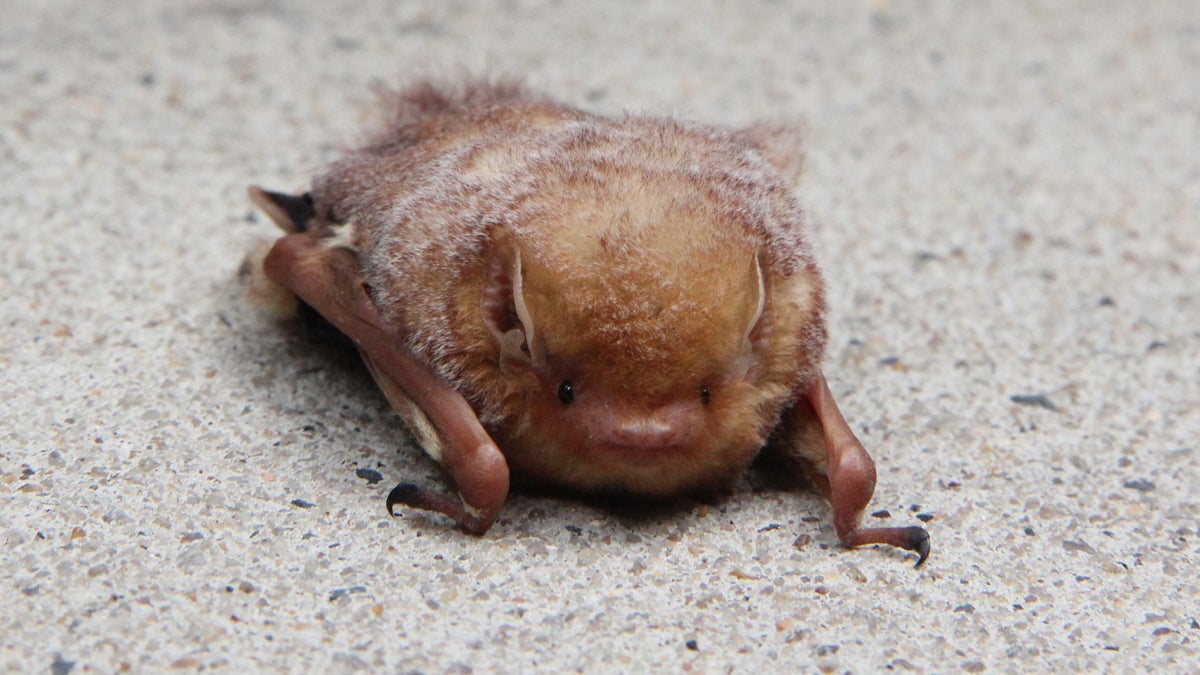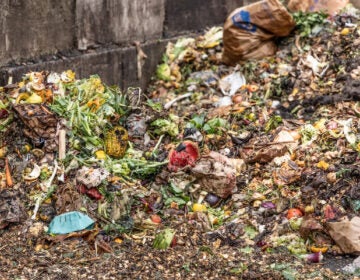Going to bat to treat, identify devastating white-nose syndrome

A bat seen in Philadelphia. (Emma Lee/WHYY)
This is Halloween weekend — which means spooky creatures dressing up in costume, creeping around the neighborhood, and trick-or-treating on our doorsteps. Count on a long line of witches, ghosts, monsters, and — bats.
But for many Pennsylvania officials, conservationists, and biologists, bats aren’t a once-a-year holiday decoration or afterthought. Some researchers study bats year-round. And for good reason.
Since 2006, 5.7 million bats across the Northeast and Midwest have died from white-nose syndrome, a deadly illness produced by a fungus found in humid hibernation caves.
The situation is dire, said Travis Lau, a spokesman for the Pennsylvania Game Commission.
“We’re at the point now where all of the caves and the abandoned mine sites where bats hibernate are presumed to be infected with white-nose syndrome,” he said.
The white, moldlike fungus eats through bats’ wings, dehydrates their immune system, and disrupts their hibernation. Without rest, millions of bats have worn down and dropped dead; most do not make it through the winter. A staggering 99 percent of Pennsylvania’s cave bats have died from the disease.
But now, just in time for Halloween, the fate of cave bats looks a little less grim.
With the support of Bat Conservation International and The Nature Conservancy, a USDA Forest Service research team has successfully treated 75 bats infected with white-nose syndrome, and then released them into the wild at the Mark Twain Cave Complex in Hannibal, Missouri.
The team’s innovative antifungal technique — which builds on R. rhodochrous bacteria research led by microbiologist Chris Cornelison at Georgia State University — isn’t a cure. But it’s a start.
Lau, who said this is good news, remains cautious.
“There’s some encouraging signs out there, heading into this winter,” he said.
Another obstacle
The goal is to prevent extinction, and to heal sick bats. But, Lau said, there’s another issue: bats reproduce slowly.
“Most adult pairs have only one pup,” Lau said. “So when you’re talking about these huge, devastating losses — even if white nose were to go away tomorrow, it would take decades and decades to restore that population to the levels it was pre-white nose.”
In one of three studies supported by CONSOL Energy, Greg Turner, a mammals specialist and researcher at the Pennsylvania Game Commission, called white-nose syndrome “the most devastating wildlife disease ever documented to impact Pennsylvania’s fauna.”
Still, the situation isn’t hopeless. Turner’s team has developed a new tool that just might help stem this crisis. It’s a UV light that can quickly diagnose damaged spots on a bat’s wing, out in the field.
This year, the game commission installed 12 cameras in caves and mines statewide to discourage trespassing and to protect hibernacula, which house large populations of bats. The cameras were donated by the Wildlife for Everyone Endowment Foundation and the U.S. Fish & Wildlife Service.
The true test of survival will be this winter, when bats retreat to Pennsylvania’s mine shafts, caves, and barns — and hibernation season begins.
WHYY is your source for fact-based, in-depth journalism and information. As a nonprofit organization, we rely on financial support from readers like you. Please give today.





